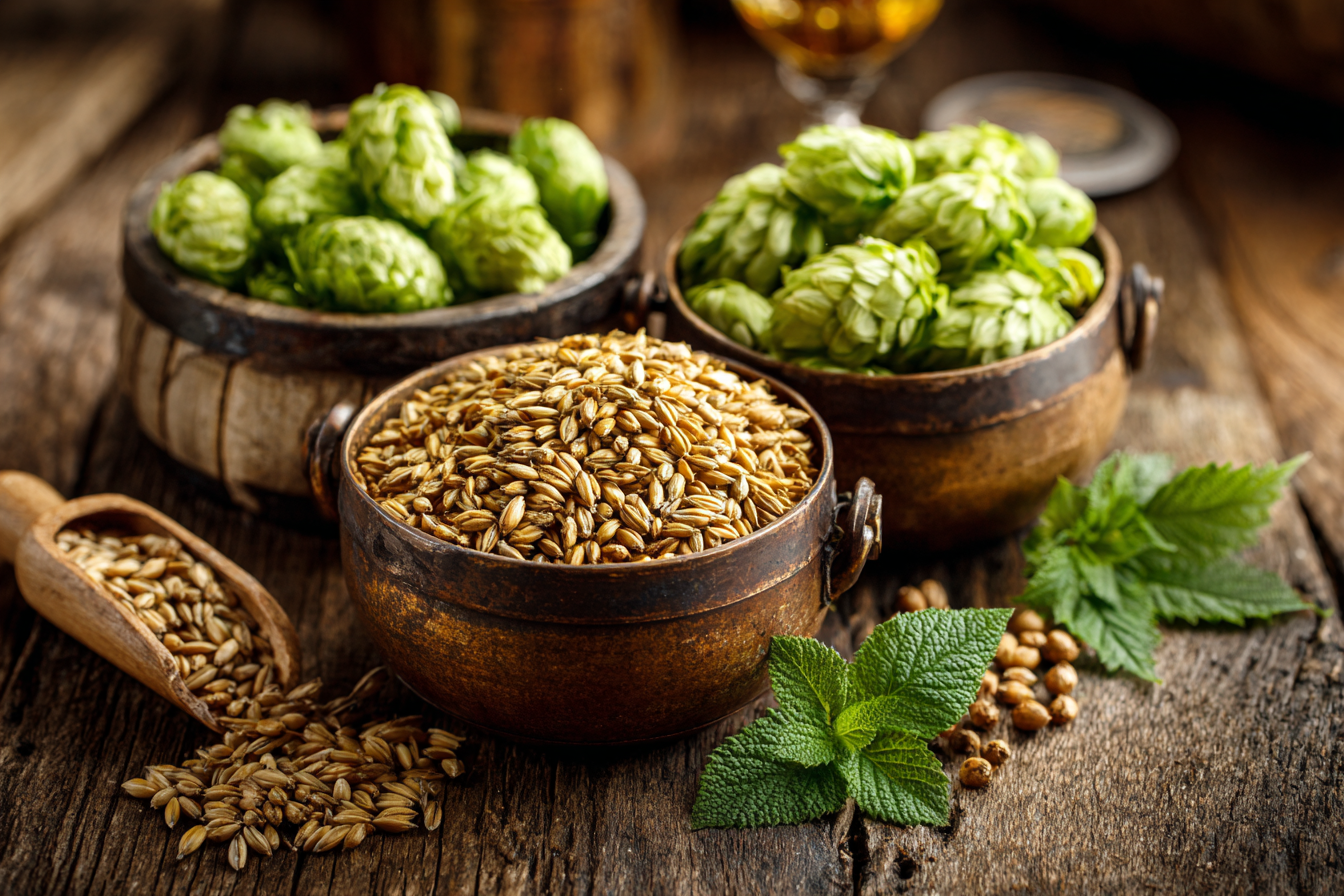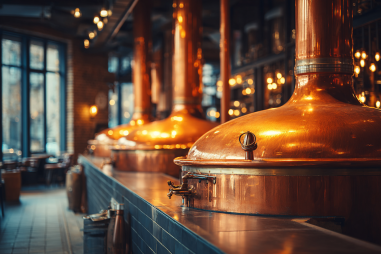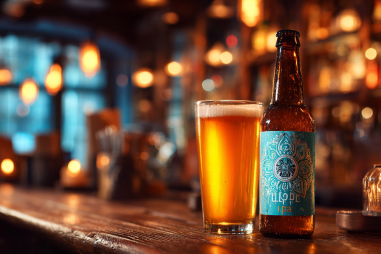When you savor a pint of Czech dark lager, you’re experiencing more than just a beer; you’re tasting a carefully crafted tradition. Czech dark lagers are beloved for their rich maltiness, smooth mouthfeel, and balanced bitterness. But what truly sets them apart from other dark beers is the meticulous selection of brewing ingredients that define their unique character. From the special malts to the signature hops and pure water, every component plays a crucial role in delivering the flavor that beer enthusiasts cherish. Let’s dive into the essential ingredients that shape Czech dark lager and understand how each one contributes to this classic brew.
Overview of Czech Dark Lager Ingredients
Czech dark lagers are known for their deep amber to dark brown color, moderate bitterness, and a complex malt profile that can include notes of caramel, chocolate, and nuts. These qualities come from a few core ingredients used in traditional brewing methods:
- Malt – specially roasted and caramel malts provide color and sweetness
- Hops – predominantly Czech hop varieties prized for their aromatic qualities
- Water – soft, mineral-balanced water crucial to flavor clarity
- Yeast – specific lager yeast strains that ferment cleanly at low temperatures
While the general ingredients mirror those in many beers, the particular choices and quality standards in Czech brewing form a recipe that’s difficult to replicate elsewhere.
Types of Malt Used and Their Roles
Malt is the heart and soul of any beer, and this is especially true for Czech dark lagers. Unlike lighter lagers, which lean on pale malts, dark lagers use a combination of malts to build depth and complexity.
The primary malt used is typically base malt, such as Pilsner malt, which provides a smooth malt backbone and fermentable sugars. To bring out that characteristic darker color and richer flavor, brewers incorporate specialty malts that add nuances to the profile:
- Caramel (or Crystal) Malts: These bring sweet, caramel, toffee, and biscuit-like flavors along with a reddish hue that enhances the beer’s warmth.
- Chocolate Malts: Lightly roasted malts that impart subtle chocolate and roasted notes without overwhelming bitterness.
- Munich Malts: Often used to add breadiness, malt complexity, and a deeper amber color.
These malts balance each other, delivering sweetness and richness while avoiding the heavy roastiness found in stouts or porters. It’s this malt composition that gives Czech dark lagers their robust yet approachable character.
Hop Varieties Favored in Czech Brewing
Hops play both a functional and flavor-enhancing role by providing bitterness to balance malt sweetness and contributing aroma and taste.
The most iconic hop used in Czech lagers is the Saaz hop, named after the Czech town Žatec (Saaz in German). Saaz is a noble hop variety known worldwide for:
- Mild and earthy bitterness
- Delicate herbal, floral, and spicy aroma
- Low alpha acid content offering gentle bitterness rather than sharp bite
This hop complements the malt sweetness beautifully, adding a refined freshness and complexity. Other hop varieties sometimes found in Czech dark lagers include Žatec Saaz hybrids or local variants that maintain the traditional pleasant bitterness and aroma profile.
The Importance of Water Quality
While often overlooked, water is a vital ingredient affecting brewing success and final flavor. Czech lagers are traditionally brewed using soft, low-mineral water recorded in the famous brewing regions such as Plzeň and České Budějovice (Budweis).
Such water profiles are low in calcium and bicarbonates, which help maintain the sweetness of the malt without introducing harsh flavors or excessive alkalinity. This soft water also allows the delicate hop aromas to shine through, contributing to the clean and smooth character typical of Czech dark lagers. Brewers take great care in sourcing or preparing water that aligns with this mineral balance to ensure authenticity.
Yeast Strains Specific to Dark Lager Fermentation
Yeast is responsible for fermenting sugars into alcohol and carbon dioxide, but it also produces flavor compounds that shape a beer’s profile. Czech dark lagers are fermented using bottom-fermenting lager yeast strains, typically Saccharomyces pastorianus, which thrive at cooler temperatures.
These yeast strains ferment slowly and cleanly, minimizing fruity esters and fusel alcohols, which could mask malt and hop flavors. The result is a crisp, smooth beer that highlights the malt and hop interplay perfectly. In some traditional breweries, proprietary yeast strains passed down through generations are used to maintain a consistent house character that defines their beers.
How Ingredient Choices Influence Flavor
Every ingredient in Czech dark lager brewing influences the beer’s final taste, aroma, and appearance. Here’s how:
- Malt: Determines sweetness level, color, mouthfeel, and complexity. Specialty malts provide subtle roasted and caramel notes without overpowering bitterness.
- Hops: Balance malt sweetness with restrained bitterness; provide aroma cues of earthiness, spice, and floral qualities.
- Water: Soft water maintains a smooth taste and prevents dulling hop flavors or creating harshness.
- Yeast: Produces a clean fermentation profile allowing malt and hops to remain front and center.
The interplay of these carefully selected ingredients creates a beer that is simultaneously rich and balanced — the hallmark of Czech dark lager.
Sourcing Authentic Ingredients for Brewing
For homebrewers or craft brewers wanting to replicate or honor the Czech dark lager tradition, sourcing authentic ingredients is key.
- Malt: Seek quality European malts from suppliers that source from Czech or Central European regions, focusing on Pilsner malt and specialty crystal and chocolate malts.
- Hops: Look for genuine Saaz hops or reliable alternatives cultivated in the Žatec region for the most authentic flavor.
- Water: Adjust your brewing water to match the soft, low-mineral profiles typical in Czech brewing — water treatment kits and mineral additions can help here.
- Yeast: Use lager yeast strains known for clean fermentation, or if possible, procure yeast from Czech breweries or commercial yeast companies offering traditional lager strains.
Combining these authentic components and adhering to traditional brewing techniques will yield a Czech dark lager true to its heritage and flavor profile.
Ultimately, Czech dark lager is more than just a beer style — it’s a testament to the harmony between high-quality ingredients and skilled craftsmanship. From the carefully malted grains and aromatic Saaz hops to the pristine water and dedicated yeast, every element plays a part in crafting that perfect pint with deep malt character balanced by gentle bitterness. With knowledge and access to these key brewing ingredients, anyone can appreciate or recreate this timeless Czech classic.







